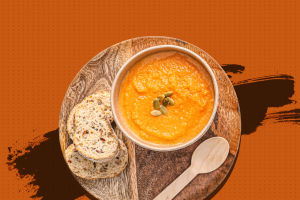Myrica rubra has high medicinal and edible value. In 1973, the Neolithic Myrica pollen was excavated at Hemudu site, indicating that Myrica grew more than 7000 years ago. There are more than 50 species of Myrica.
Myrica rubra, which likes acidic soil, is native to hillsides or valley forests with an altitude of 125-1500 meters in temperate and subtropical humid climate, that is, between 20- and 31-degrees north latitude. It is similar to the distribution of citrus, loquat, tea tree, moso bamboo, etc., but its cold resistance is stronger than that of citrus and loquat. Myrica rubra is strong, easy to cultivate, long economic life, and the production cost is significantly lower than other fruits. Therefore, it is known as "green enterprise" and "cash cow".
In addition to fresh eating, Myrica rubra fruit can also be processed into canned Myrica rubra in syrup, jam, preserves, fruit juice, dried fruit and other foods, and its added value has doubled. Fresh Myrica rubra Fruits or products are also transported by air to Hong Kong, Singapore, France, and other markets. In Hong Kong supermarkets, Dongkui Myrica rubra sells for up to $1 each. In 2000, Dongkui Myrica rubra was airlifted to France at a price of about $42 per kilogram.
According to the determination: the sugar content of high-quality Myrica rubra pulp is 12%-13%, and the acid content is 0.5%-1.1%. It is rich in cellulose, mineral elements, vitamins, a certain amount of protein, fat, pectin and 8 kinds of amino acids beneficial to human body. The content of calcium, phosphorus and iron in its fruit is more than 10 times higher than that of other fruits.
Myrica rubra contains a variety of organic acids, and the content of vitamin C is also very rich. It can not only directly participate in the metabolism and redox process of sugar in the body, enhance the permeability of capillaries, but also reduce blood lipids and prevent the formation of cancer cells in the body. The fruit acid contained in it can not only stimulate appetite, generate fluid, relieve summer heat, but also prevent the sugar in the body from transforming into fat, which is conducive to weight loss. Myrica rubra has an inhibitory effect on Escherichia coli, dysentery bacilli and other bacteria, can treat dysentery abdominal pain, and has a good effect on those who have more than diarrhea. Myrica rubra contains vitamins C and B, which have a positive effect on cancer prevention and anticancer. The cyanamide and fatty oil contained in Myrica rubra kernel also have the effect of inhibiting cancer cells.
Myricetin, the effective component of Myrica rubra Leaves, has the effects of astringent, stimulant, and emetic. It is used for diarrhea, yellow bile hepatitis, lymphotuberculosis, diffuse pharyngitis, etc. Bayberry bark element also has antioxidant properties and eliminates free radicals in the body. It is widely used in medicine, food, health products and cosmetics. American health care drug FYI uses myricetin to treat and prevent arthritis and various inflammation, especially for pregnant women and lactating infants. Myricetin (flavonol flavonol), six hydroxyerythrones. It can also be used as an additive in cosmetics.
After eating Myrica rubra, you should rinse your mouth or brush your teeth in time to avoid damaging your teeth. Dip a little salt when eating, it will be more delicious. Myrica rubra has a certain stimulating effect on gastric mucosa, so patients with ulcer should eat with caution. People who have toothache, excessive stomach acid should not eat too much. Diabetics should avoid eating Myrica rubra to avoid high blood sugar.


